
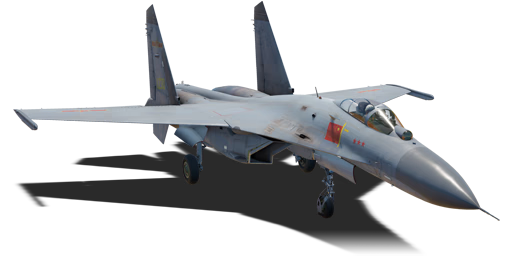


The J-11A (歼-11A型歼击机) with identical NATO codename of Flanker-B, represents the Sino-Belarusian upgrade for the SKD series J-11, a licensed built of the infamous Su-27SK. By 1996, SAC has negotiated for the domestic assemble and later production of Su-27SK at Shenyang, Liaoning, where the experiences gained during the construction would further be refined by engineers as the basis of future heavy interceptors; after the blueprints and required machineries have been delivered to Shenyang, SAC constructed the first batch by September 1998 and further 4 batches were constructed until the later J-11B (Flanker-L) replaced the production line, now with mostly domestic alternatives to the decade-old Flankers and fully translated cockpit. Originally, Russia has planned for a Su-27SMK variant for PLAAF with upgraded avionics and weaponry; however the completion of reverse-engineer and introduction of domestic interceptors with vastly improved avionics put an end to this program. Meanwhile, after the introduction of PLANAF's Su-30MKK (Flanker-G) and their RVV-AE missiles, PLAAF seek for solutions to upgrade the J-11A fleet with capabilities to launch ARH AAMs; this in turn led to the cooperation between SAC and Belarusian's 558th Aircraft Repair Plant where the latter introduced a very interesting mean to bypass the obsolete FCS on J-11A, by programming and rewiring the systems to trick it that it was an earlier R-27 series instead of a RVV-AE was installed, Belarusian engineers upgraded the aircraft at minimal costs and modifications to J-11A. By 2010s, the need for intensive CAP missions over South China Sea also brought in a new upgrade for certain J-11As operated by divisions in Guangdong by installing domestic UV MAWS systems for maximum situational awareness; these aircrafts are still in service with PLAAF by some units as part of the ever-growing PLAAF interceptor fleet.
Introduced in Update "Seek & Destroy" as one of the new Flankers arrived in game for this patch, J-11A introduced the capabilities to launch ARH AAM while having slight upgrade on situational awareness; while the aircraft itself is still haunts by the vastly inferior Russian avionics, the overall combat capability and handling is mostly identical, if not better than previous J-11 (Su-27SK).
flaps
flaps
flaps
brake
| Belt | Belt filling | Armor penetration (mm) at a distance: | |||||
|---|---|---|---|---|---|---|---|
| 10 m | 100 m | 500 m | 1000 m | 1500 m | 2000 m | ||
| AP-T/HEF-I | 55 | 53 | 45 | 37 | 31 | 25 | |
| AP-T/HEF-I/APHE/HEF-I | 55 | 53 | 45 | 37 | 31 | 25 | |
| AP-T/APHE | 55 | 53 | 45 | 37 | 31 | 25 | |
| AP-T/HEF-I/HEF-I | 55 | 53 | 45 | 37 | 31 | 25 | |
| APHE/HEF-I/HEF-I | 42 | 40 | 34 | 28 | 23 | 19 | |
| Name | Weight | Slot | ||||||||||
|---|---|---|---|---|---|---|---|---|---|---|---|---|
| 105 kg |  |  |  |  |  |  | ||||||
| 114 kg |  |  | ||||||||||
| 268 kg |  |  |  |  |  |  |  |  | ||||
| 253 kg |  |  |  |  |  |  | ||||||
| 350 kg |  |  |  |  |  |  | ||||||
| 245.5 kg |  |  | ||||||||||
| 343 kg |  |  | ||||||||||
| 177 kg |  |  |  |  |  |  | ||||||
| 6 × | 684 kg | 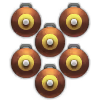 |  |  |  |  |  | |||||
| 6 × | 1,608 kg | 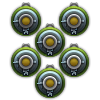 |  | |||||||||
| 227 kg |  |  |  |  |  |  | ||||||
| 275 kg |  |  |  |  |  |  | ||||||
| 508.3 kg |  |  |  |  |  |  | ||||||
| 515 kg |  |  |  |  |  |  | ||||||
| 374 kg |  |  |  |  |  |  | ||||||
| 20 × | 376 kg |  |  | |||||||||
| 5 × | 505 kg |  |  | |||||||||
| 370 kg |  |  | ||||||||||
| 367 kg |  |  | ||||||||||
| 367 kg |  |  | ||||||||||
| 2 × | 536 kg | 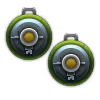 |  |  | ||||||||
| 2 × | 454 kg |  |  | |||||||||
| 2 × | 550 kg |  |  | |||||||||
| 2 × | 1,016.6 kg |  |  | |||||||||
| 2 × | 1,030 kg |  |  | |||||||||
| 2 × | 748 kg |  |  | |||||||||
| 40 × | 752 kg |  |  | |||||||||
| 10 × | 1,010 kg |  |  | |||||||||
| 2 × | 740 kg | 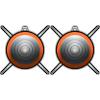 |  | |||||||||
| 2 × | 734 kg |  |  | |||||||||
| 2 × | 734 kg |  |  | |||||||||
| 5 × | 1,340 kg | 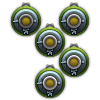 |  | |||||||||
| 4 × | 1,072 kg | 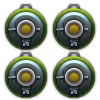 | ||||||||||












Flight performance | |
|---|---|
Survivability |
|---|
Weaponry | |||
|---|---|---|---|